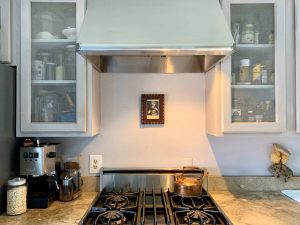Will the office be killed by the coronavirus?

Looking at how one firm, Bergmeyer, is returning to work raises some questions.
In the Economist’s 1843 Magazine, Catherine Nixey writes about the death of the office. She notes that this is not a new issue.
Even before coronavirus struck, the reign of the office had started to look a little shaky. A combination of rising rents, the digital revolution and increased demands for flexible working meant its population was slowly emigrating to different milieux. More than half of the American workforce already worked remotely, at least some of the time. Across the world, home working had been rising steadily for a decade. Pundits predicted that it would increase further. No one imagined that a dramatic spike would come so soon.
She notes that the Romans didn’t need offices; “Their tablets and styluses were every bit as portable as our own, a feature that elite Romans took full advantage of.” Technology has come full circle, and many who previously worked in offices moving symbols on computers can work from anywhere now, and have been doing just that thanks to the coronavirus. Many are also wondering what it will be like if and when we go back.
Looking at this plan for returning to work from Bergmeyer, a Boston design collaborative, I suspect that most people will prefer to stay home. They are “sharing our workplace re-entry plan as a resource for everyone who is facing the daunting task of crafting their own path to return to their workplace. It is part of our commitment to be supportive within our global community.”
Daunting is truly the appropriate adjective. Employees are returning to the office in three waves, and won’t all be back until mid-July. Employees in each wave will work a staggered schedule – Monday/Wednesday/Friday and sitting in light blue seats, or Tuesday/Thursday sitting in dark blue seats. “No more than 3 staff members will be permitted per ‘pod’ of 6. Staff will be scheduled such that every other desk may be occupied with no person directly facing another.” It’s a good thing that we don’t have to carry rolls of drawings back and forth anymore.
Conference rooms are set up so that nobody is within six feet of each other, so occupancy will be pretty low. In fact, the biggest meeting in the entire office is five people.
- We will be instituting a Clear Desk policy that allows surfaces to be properly cleaned daily. Employees are required to keep their horizontal desk surfaces clear so that they can be wiped down by the janitorial staff at the end of each work-day. This means no paper or personal effects other than technology items (laptop, monitor, keyboard, mouse) shall remain out on your desk at the end of the day.
- Disinfectant wipes, spray cleaners with paper towels, and hand sanitizer, and hand soap will be readily available throughout the office and especially at shared areas
- Gloves will be used by anyone emptying the dishwasher. Disposable cups and plates will be available if you would prefer not to use communal items.
- Everyone is encouraged to wear a face mask in the office during the transition period through July 17th.
- Limit use of shared technology such as Shuttle PCs and xerox machines unless absolutely necessary. Use own devices to log in concurrently to meetings.
- Coffee makers and the tea station will be unavailable for office use through July 17th. Shared office snacks and condiments will not be used through July 17th.
- Limit use of refrigerators, microwaves and other shared kitchen items. Bring lunch bag with cold packs if you bring your lunch.
Now of course, this isn’t forever, there will eventually be a vaccine or herd immunity or the president’s miracle. But it raises so many questions about why we have offices, what they are for. Nixey, writing in 1843, concluded:
Humans need offices. Online encounters may be keeping us alive as social beings right now, but work-related video meetings are too often transactional, awkward and unappealing. After the initial joy of peering into each other’s houses on Zoom, we are confronted with people’s heads looming even closer than we see them across the desk at work, and we gaze in horror – half of it self-awareness that we, too, must look awful – at thinning hair and double chins. We become freakish specimens rather than people. No Skype chat can replicate what [designer Thomas] Heatherwick calls the “chemistry of the unexpected” that you get in person. Offices may not fill the pages of poetry anthologies but, says [FT writer Lucy] Kellaway, they “can be as moving as anywhere on Earth. Because what moves us is not sitting at our computer, it’s the relationship that we have with people.”
I am not sure I agree. People in offices often look awful. They often smell awful. I am not sure how much chemistry or biology people actually want these days. I am not sure it is any happier for the client under the circumstances; no coffee, only three people in the room, it’s not a particularly pleasant-sounding experience.
 © Bergmeyer
© BergmeyerBergmeyer has done a great service to the community by releasing this to the public. Employers and employees who are concerned about everyone’s health and wellbeing all have to do stuff like this. They are also being really flexible:
The office re-entry plan is completely voluntary, as we are well equipped to continue to support our employees working from home for the foreseeable future. While some employees will choose to remain at home, we recognize that there are many people who are eager to return to the office as soon as it is safe to do so.
But it all sounds so dire and difficult. It will be interesting to see how many people are really, really desperate to get out of the house and how many have decided that they would rather keep working from home. I hope that Bergmeyer does regular updates.
Looking at how one firm, Bergmeyer, is returning to work raises some questions.







